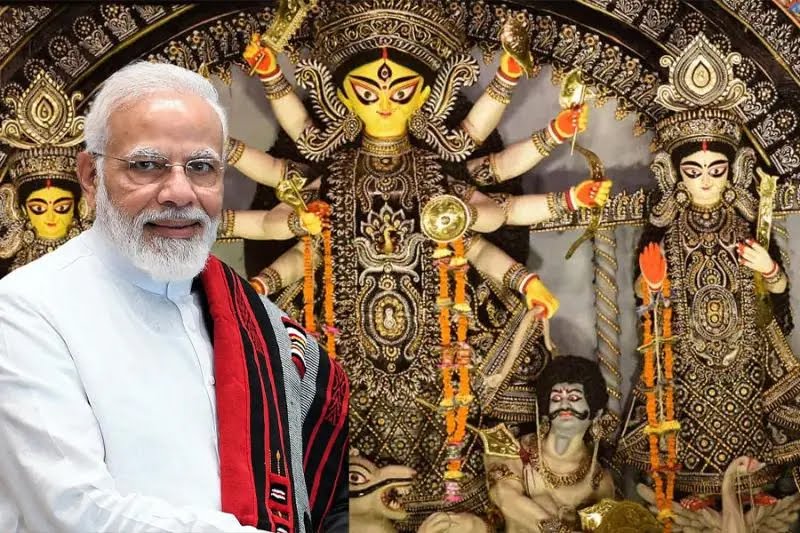News Desk, Kolkata : In a strategic move, the Modi government plans to extend economic support to Durga Puja celebrations in West Bengal, emphasizing the cultural fabric of the state. After the grand inauguration of the Ram Mandir, the center now aims to foster religious fervor in Bengal, allocating financial grants ranging from 50 thousand to 1 lakh for selected clubs. However, only 35 clubs will benefit from this funding, and the criteria for selection remain undisclosed.
Amidst the political milieu, the center’s Culture Minister’s unconventional step has infused a political aroma into the impending Lok Sabha elections. An advertisement reveals that the government intends to provide funds for the grandest celebration of Bengal—Durga Puja. It states, “Ram started Durga Puja in Bengal. The untimely inauguration is the real inauguration. Therefore, after the establishment of Ram Mandir in Ayodhya, significant decisions are in order.”
In an unexpected twist, social organizations affiliated with the BJP have organized an event where funds will be handed over to these selected clubs. This gesture aims to strengthen the party’s presence in the city. The funds, totaling to 35 clubs, will be distributed from this event. Notably, three renowned Puja committees from Kolkata are said to be included in the list. The government justifies its financial support, stating, “The untimely inauguration is the real inauguration.”
The announcement, however, has sparked political debates, with the BJP facing opposition from various quarters. Bengal BJP has been vocally against providing grants to Puja committees during Durga Puja. Conversely, leaders from Padma Shibir have questioned whether Durga Puja should even be celebrated in this state.
Amidst these controversies, Modi’s move to capture the hearts of Bengalis before the Lok Sabha elections through economic support for Durga Puja becomes evident. The decision to choose 35 clubs remains shrouded in mystery, with conflicting reports about whether Shubhendu Adhikari or Sukanta Majumdar finalized the list.
While the BJP maintains that the center has set clear guidelines for the selection, the details remain elusive. Shuvendu Adhikari, a key spokesperson for the state BJP, acknowledges the decision but claims ignorance about the specific criteria for club selection. He comments, “The center has outlined certain guidelines when selecting the 35 clubs. It’s about maintaining decorum and avoiding extravagance. The central government is directing its actions towards a specific purpose.”
The intricate dance between religion and politics in Bengal takes center stage once again as the BJP strives to harness the emotional connection Bengalis share with Durga Puja. The narrative unfolds as the BJP navigates through the religious sentiments of Bengalis, attempting to weave a political strategy that aligns with cultural celebrations.
The clash between political ideologies intensifies, with the ruling TMC’s leader, Arup Chakraborty, stating, “We need to follow the path shown by Mamata Banerjee. The BJP must walk on our established road.” The BJP’s attempt to intertwine religious and political threads aims to create a narrative that resonates with the people, particularly as the Lok Sabha elections draw near.
In the backdrop of these developments, the political landscape of Bengal transforms into a battleground, where the BJP and the ruling party engage in a tussle for influence. The economic support for Durga Puja becomes not just a financial gesture but a symbolic move with potential implications on the political choices of the people.
As Bengal gears up for yet another chapter in its dynamic political saga, the echoes of cultural sentiments and religious fervor mingle with the cacophony of political discourse. The tale of Durga Puja unfolds as a script where tradition, politics, and identity intertwine, creating a narrative that captivates the attention of the people and shapes the contours of Bengal’s political future.
DISCLAIMER
Our news media denounces any form of bias and disapproves of sensationalism. The disseminated news is entirely educational and aimed at social awareness. Our media maintains absolute impartiality, adhering solely to the purpose of education and social consciousness.


